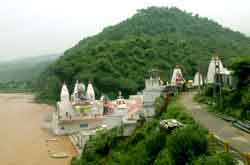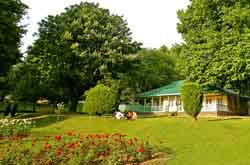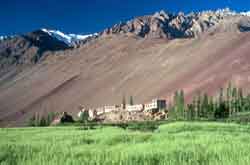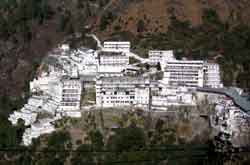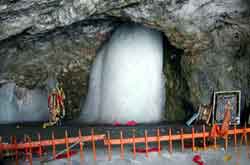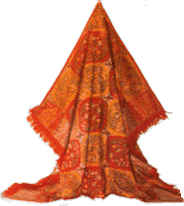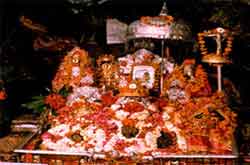Kashmir Shawls
Perhaps, nothing epitomises the glorious history of Kashmiri craftsmanship, as warmly and beautifully, as does the Pashmina.
A legacy of the great moghuls, it evolved over three hundred years under the patronage of four different rules. Some of the craftsmen in Srinagar have managed to revive that old glory and provide replicas of 16th & 17th century hand embroidered shawls. It even takes 5-12 months to prepare a hand embroidered shawl.
There are three fibres from which Kashmiri shawls are made - wool, pashmina and shahtoosh. The prices of the three cannot be compared - woollen shawls being within reach of the most modest budget, and shahtoosh being a one-in-a-lifetime purchase.
Pashmina Masterpieces from Kashmir
Woollen shawls are popular because of the embroidery worked on them, which is unique to Kashmir. Both embroidery and the type of wool used bring about differences in the price. Wool woven in Kashmir is known as raffel and is always 100 per cent pure. Sometimes blends from other parts of the country are used and Kashmiri embroidery is worked on them. These blends contain cashmilon, cotton, or a mixture of both.
Many kinds of embroidery are worked on shawls. 'Sozni' (needlework) is generally done in a panel along the sides of the shawl. Motifs, usually abstract designs or stylised paisleys and flowers are worked in one or two, and occasionally three subdued colours. The stitch employed is not unlike stem stitch, and only the outline of the design is embroidered. The fineness of the workmanship and the amount of embroidery determines the value of the shawl. Sozni is often done so skilfully that the motif appears on both sides of the shawl, each side having a different colour scheme. This naturally has a bearing on the cost.
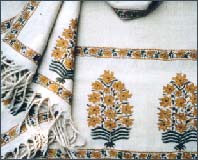
Another type of needle embroidery is popularly known as 'papièr mâchè' work because of the design and the style in which it is executed. This is done either in broad panels on either side along the breadth of a shawl, or covering the entire surface of the breadth of a shawl or that of a stole. Flowers and leaves are worked in chain stitch in bright colours such as those of papier-mache and each motif is then outlined in black.
A third type of embroidery is Aari or hook embroidery. Motifs here are the well-known flower design finely worked in concentric rings of chain stitch.
Pashmina is unmistakable because of its softness. Pashmina yarn is spun from the hair of the ibex found in the highlands of Ladakh, at 14,000 ft above sea level. Although pure pashmnina is expensive, the cost is sometimes brought down by blending it with rabbit fur or with wool. It is on pashmina shawls that Kashmir's most exquisite embroidery is executed, sometimes covering the entire surface, earning it the name of 'jamawar’. A Jamawar shawl can, by virtue of the embroidery, increase the value of a shawl threefold.
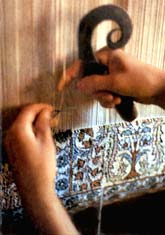
A second, less frequently seen weave done only on pashmina, covers the surface with tiny lozenge shaped squares, earning it the delightful name of 'chashm-e-bulbul,' or "eye of the bulbul". As this weave is a masterpiece of the weaver's art, it is normally not embroidered upon.
Shahtoosh, from which the legendary 'ring shawl' is made, is incredibly light, soft and warm. The astronomical price it commands in the market is due to the scarcity of the raw material. High in the plateaux of Tibet and the eastern part of Ladakh, at an altitude of above 5,000 m, roam the Tibetan antelope (Pantholops Hodgsoni). During grazing, a few strands of the downy hair from the throat are shed which are painstakingly collected by the nomads, eventually to supply to the Kashmiri shawl makers as shahtoosh.
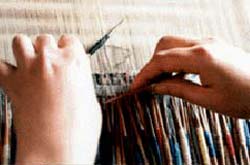
The yarn is spun either from shahtoosh alone, or mixed with pashmina, bringing down the cost somewhat. In the case of pure shahtoosh too, there are many qualities - the yarn can be spun so skilfully as to resemble a strand of silk. Not only are shawls, made from such fine yarn, extremely expensive, but can only be loosely woven and are too flimsy for embroidery to be done on them. Unlike woollen and pashmina shawls, shahtoosh is seldom dyed - that would be rather like dyeing gold! Its natural colour is mousy brown, and it is, at the most, sparsely embroidered.
Kani Shawls is another rear items which is also produced for art lovers. Those who know understand that craftsman puts his heart and soul to produce such shawls.

